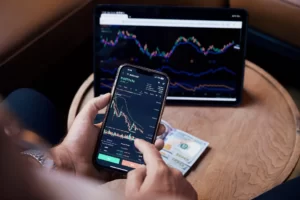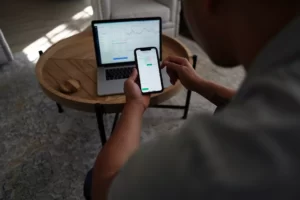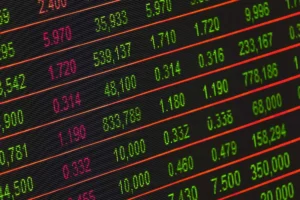With simple trading platforms and 0% charges, it’s now simpler than ever for retail investors to attempt trading like pros. Day trading is a sort of trading that entails purchasing and selling securities inside a single day. Day traders use tactics such scalping, range trading, news based trading, and high frequency trading, and they often concentrate on equities that see large price changes during a trading session.
Day trading is a contentious subject despite the potential for profit because some people engage in it without adequate training. Many seasoned money managers and financial consultants avoid day trading, claiming that the potential gain does not outweigh the potential danger. A person needs market expertise and experience, enough funds, day trading tactics, and discipline to succeed in day trading.
Even with these advantages, day trading is risky and requires substantial skill, and even the most seasoned day trader can lose everything with one unfortunate event.
In a Nutshell
- Buying and selling securities all in one day is known as day trading.
- Day traders concentrate on stocks that see large price changes throughout a trading session.
- Scalping, range trading, news based trading, and high frequency trading are all methods employed in day trading.
- Professional managers and financial experts frequently contend that the benefit of day trading does not outweigh the risk.
- Successful day traders possess market expertise and experience, enough capital, discipline, and day trading tactics.
- Even the most seasoned day traders can have losing streaks since day trading is dangerous and needs a great deal of skill.
What is Day Trading?
Day Trading Basics
Day trading means buying and selling a lot of securities in one day, or even in a matter of seconds. It has nothing to do with investing in the traditional sense. It is about taking advantage of the inevitable upward and downward price movements that occur during a trading session.Day trading is most common in the stock markets and in the foreign exchange market (forex), where currencies are traded.
The most important quality for a day trader is discipline.
Paul Tudor Jones
Day traders are usually well educated in the minutiae of trading and are often well financed. Many of them add an additional level of risk by using leverage to increase the size of their bets.Day traders watch for events that trigger short term market movements. One popular technique is news based trading. Timed announcements, such as the release of economic statistics, corporate earnings or interest rate announcements, are subject to market expectations and psychology.
That is, markets react when those expectations are not met or exceeded, usually with sudden and significant moves that can greatly benefit day traders.
Day traders use numerous intraday strategies. These strategies include:
- Scalping: This strategy focuses on making numerous small profits on ephemeral price changes that occur throughout the day.
- Range Trading: This strategy uses predetermined support and resistance levels in prices to determine the trader’s buy and sell decisions.
- News based Trading: This strategy takes advantage of trading opportunities arising from increased volatility around news events.
- High frequency trading (HTF): These strategies use sophisticated algorithms to exploit short term market inefficiencies.
Why Day Trading is Controversial
The profit potential of day trading is a hotly debated topic on Wall Street. Internet scams have attracted amateurs by promising huge profits in a short time.Some people practice day trading without sufficient knowledge. But there are traders who make a successful living despite the risks, or perhaps because of them.
Many professional money managers and financial advisors shy away from day trading. They argue that, in most cases, the reward does not justify the risk. In addition, many economists and financial professionals argue that active trading strategies of any kind tend to underperform a more basic passive index strategy over time, especially when commissions and taxes are taken into account.
It is possible to make profits with day trading, but the success rate is inherently lower because it is risky and requires considerable skill. And don’t underestimate the role of luck and timing. One stroke of bad luck can sink even the most experienced day trader.
How does a Day Trader Start?
Professional day traders those who trade for a living and not as a hobby are usually well established in the industry. They also usually have a deep understanding of the market. These are some of the requirements necessary to be a successful day trader.
Market Knowledge and Experience
People who try to day trade without knowing the fundamentals of the market often lose money. A working knowledge of technical analysis and chart reading is a good start. But without a thorough knowledge of the market and its specific risks, charts can be misleading.
Perform due diligence and know the ins and outs of the products you are dealing with.
Sufficient Capital
Prudent day traders only use the risk capital they can afford to lose. This protects them from financial ruin and helps eliminate emotion from their trading decisions.
Often a large amount of capital is needed to effectively capitalize on intraday price movements, which can be pennies or fractions of a cent.
Day traders wishing to use leverage on margin accounts must have sufficient cash on hand. Market swings can trigger large margin calls on short notice.
Daily Trading Strategies
A trader needs to have an edge over the rest of the market. Day traders use a number of strategies, such as swing trading, arbitrage and news trading. They refine these strategies until they produce consistent profits and limit their losses.There are also some basic day trading rules to follow: Choose your trading options wisely. Plan your entry and exit points in advance and stick to the plan. Identify patterns in your options trading activities in advance.
Disciplines
Many day traders end up losing money because they fail to make trades that fit their own criteria. As the saying goes, “Plan the trade and trade the plan”. Success is impossible without discipline.
To make profits, day traders rely heavily on market volatility. A day trader may find a stock attractive if it moves a lot during the day. This can be due to a number of reasons, such as an earnings report, investor confidence or even general economic or business news.
Day traders also like stocks that are very liquid, because that gives them the opportunity to change their position without altering the price of the stock. If the price of a stock goes up, traders can take a buy position. If the price goes down, the trader may decide to sell short in order to profit when it goes down.
Regardless of the technique a day trader uses, he or she usually looks to trade stocks that move (a lot).
Who Makes a Living from Day Trading?
There are two main divisions of professional day traders: those who work alone and/or those who work for a larger institution.
Most day traders who trade for a living work for large traders such as hedge funds and proprietary trading desks of banks and financial institutions. These traders have an advantage because they have resources such as direct lines to counterparties, a trading desk, large amounts of capital and leverage, and expensive analytical software.
These traders often seek easy profits from arbitrage opportunities and news events. Their resources allow them to capitalize on these less risky day trades before individual traders can react.
Solo Day Rraders
Individual traders often manage other people’s money or simply trade with their own. Few have access to a trading desk, but they are often closely tied to a brokerage because of the large amounts they spend on commissions and access to other resources.
However, the limited scope of these resources prevents them from competing directly with institutional day traders. Instead, they are forced to take on more risk. Individual traders often day trade using technical analysis and swing trading combined with some leverage to generate adequate profits from small price swings in highly liquid securities.
Day trading requires access to some of the most complex financial instruments and services in the market. Day traders usually need all of the following:
Access to a Procurement Desk
It is usually reserved for traders working for large institutions or those who handle large amounts of money.
The trading desk offers these traders instant order execution, which is crucial. For example, when an acquisition is announced, day traders looking for merger arbitrage can place their orders before the rest of the market can take advantage of the price differential.
Multiple News Sources
News provides most of the opportunities. It is essential to be the first to know when something important happens.
The typical trading room has access to all major newscasts, constant coverage from news organizations and software that constantly scans news sources for important stories.
Analytical Software
Trading software is an expensive necessity for most day traders. Those who rely on technical indicators or swing trades rely more on software than news. This software can be characterized by the following:
- Automatic pattern recognition: This trading software identifies technical indicators such as flags and channels, or more complex indicators such as Elliott Wave patterns.
- Genetic and neural applications: These programs use neural networks and genetic algorithms to refine trading systems and make more accurate predictions of future price movements.
- Broker integration: Some of these applications even interact directly with the broker, allowing instant and even automatic execution of trades. This takes the emotion out of trading and improves execution times.
- Backtesting: This allows traders to see how a given strategy would have performed in the past to more accurately predict how it will perform in the future. Keep in mind that past performance is not always indicative of future results.
Combined, these tools give traders an edge over the rest of the market.
Day Trading Risks
For the average investor, day trading can be a daunting proposition because of the number of risks involved. The U.S. Securities and Exchange Commission (SEC) highlights some of the risks of day trading, which are summarized below:
- Be prepared to suffer severe financial losses: Day traders often suffer severe financial losses in their first few months of trading, and many never make a profit.
- Day trading is an extremely stressful full time job: Watching dozens of quotes and price fluctuations to spot fleeting market trends requires great concentration.
- Day traders rely heavily on borrowed money: Day trading strategies use leverage on borrowed money to make profits. Many day traders not only lose all their money, but end up going into debt.
- Don’t believe what they say about easy profits: Beware of expert advice and recommendations in newsletters and websites dedicated to day traders, and remember that day trading seminars and classes may not be objective.
Should I Start Day Trading?
If you are determined to start day trading, be prepared to follow the steps below:
- Make sure you know your way around the trading world and have a good idea of your risk tolerance, capital and goals.
- Be prepared to spend time practicing and refining your strategies.
- Start small. Focus on a few stocks instead of wearing yourself out. Going all out will complicate your trading strategy and can mean big losses.
- Keep calm and try to keep emotion out of your trades. Do not deviate from your plan.By following these simple guidelines, you may be well on your way to a sustainable career in day trading.
Example of Daily Trading
A day trade is exactly the same as any stock trade, except that both the purchase of a stock and its sale occur on the same day, and sometimes within seconds of each other.
For example, suppose a day trader has performed a technical analysis of a company called Intuitive Sciences Inc (ISI). The analysis indicates that this stock, which trades on the Nasdaq 100, shows a pattern of rising price of at least 0.6% on most days when the NASDAQ rises more than 0.4%. The trader has reason to believe that this will be one of those days.
The trader buys 1,000 shares of ISI when the market opens and waits for ISI to reach a certain price, probably 0.6%. He then immediately sells his entire stake in ISI.
It is a day trade. Obviously, the merits of ISI as an investment have nothing to do with the actions of the day trader. A trend is being exploited.
What if ISI had followed the trend and lost 0.8%? The trader would sell anyway and take the loss.
How to Start Day Trading?
A successful day trader knows the discipline of technical analysis. It involves identifying trading opportunities by observing and charting the price and volume movement patterns of a stock (or any other investment). The long term trend shows how the stock has behaved in the past and suggests how it should behave in the immediate future.
Nowadays, technical analysis is not usually done with paper and pencil. Software packages are available to help create charts and graphs for this purpose.
The day trader must also have a plan before making a single trade. What securities to trade and what prices are acceptable to buy and sell should all be established beforehand. A successful day trader leaves no room for impulsive buying.
Finally, even a solo day trader must have a trading desk, fully equipped with the necessary news, real time data and brokerage services to carry out the plan.
If you are going to trade on margin, you will also need to deposit a lot of cash with the broker. This is not recommended for a beginner, as it carries a high risk of the trader ending up broke and in debt.
It is much better to start with the amount of money you can afford to lose.
What is the First Rule of Day Trading?
The first rule of day trading is to never hold a position when the market closes for the day. Win or lose, sell it.
Most day traders make it a rule never to hold a losing position overnight in the hope of being able to recoup some or all of their losses.
On the one hand, brokers require higher margins for overnight operations, which means that additional capital is needed.
There is a good reason for this. A stock can go down or up on the news overnight, inflicting a larger trading loss on stock owners.
What are the Margin Requirements for Day Traders?
In accordance with the rules of the Financial Industry Regulatory Authority (FINRA), the minimum capital requirement for a customer of a broker dealer to be designated as a daily trading pattern is $25,000. This amount must be deposited in the customer’s account prior to any daily trading activity and maintained at all times.
What is the Purchasing Power of Day Trading?
Buying power refers to the total funds available to an investor to trade securities, and is equal to the cash held in the account plus available margin.
Under FINRA rules, a customer of a broker dealer designated as a day trader may trade up to four times its excess maintenance margin at the close of the previous day’s market.
Wrap Up
In conclusion, day trading can be a rewarding job, but it can also be challenging for newcomers, particularly those without a well thought out approach. Even with a great deal of talent and discipline, it still carries a high degree of risk. Successful day traders focus on equities that have big price swings throughout a trading session, have a thorough understanding of the market, and are typically well funded. Even while day trading has the potential to be profitable, many expert money managers and financial counselors avoid it, claiming that the return does not outweigh the danger.
FAQs

Day trading is the practice of buying and selling securities on a single trading day, typically in an effort to profit from price variations that day. It differs from conventional investment in that it prioritizes immediate rewards above long term growth.
A number of intraday trading tactics, including scalping, range trading, news based trading, and high frequency trading, are used by day traders. Every method has a unique way of making money off the market.
A successful trader can be anyone, but it takes extensive market knowledge, self control, and risk management. Successful traders typically have the expertise, knowledge, and capital to accept the risks.
Day trading is a dangerous kind of investing. There is a chance of making significant profits, but there is also a chance of making sizable loses. Day traders need to fully comprehend the market and manage their risks appropriately.
Yes, for individuals with the necessary skills and determination, day trading may be a lucrative job. Success is not guaranteed, though, and mastering the tactics and strategies required to generate steady income requires a lot of time, work, and attention.
Article sources
At Capital Maniacs, we are committed to providing accurate and reliable information on a wide range of financial topics. In order to achieve this, we rely on the use of primary sources and corroborated secondary sources to support the content of our articles.
Primary sources, such as financial statements and government reports, provide firsthand evidence of financial events and trends. By using primary sources, we are able to directly reference information provided by the organizations and individuals involved in these events.
Secondary sources, such as financial analysis and commentary, interpret and analyze primary sources. While these sources can be useful for providing context and background information, it is important to use corroborated sources in order to ensure the accuracy and reliability of the information we present.
We take pride in properly citing all of our sources, both primary and secondary, in order to give credit to the original authors and to allow our readers to verify the information for themselves. We appreciate your trust in our website and are committed to upholding the highest standards of financial journalism.
- U.S. Securities and Exchange Commission – Equity Market Structure Literature Review, Part II: High Frequency Trading Page 4.
- Dummies – A Day in the Life of a Day Trader
- Business Insider – If You’re Day Trading, You Will Probably Lose Money: Here’s Why
- Wall Street Prep – Sales & Trading Analyst: Day In The Life
- U.S. Securities and Exchange Commission – Day Trading: Your Dollars at Risk
- Forbes – Day Trading: Smart or Stupid?”
- U.S. Securities and Exchange Commission – Margin Rules for Day Trading



























